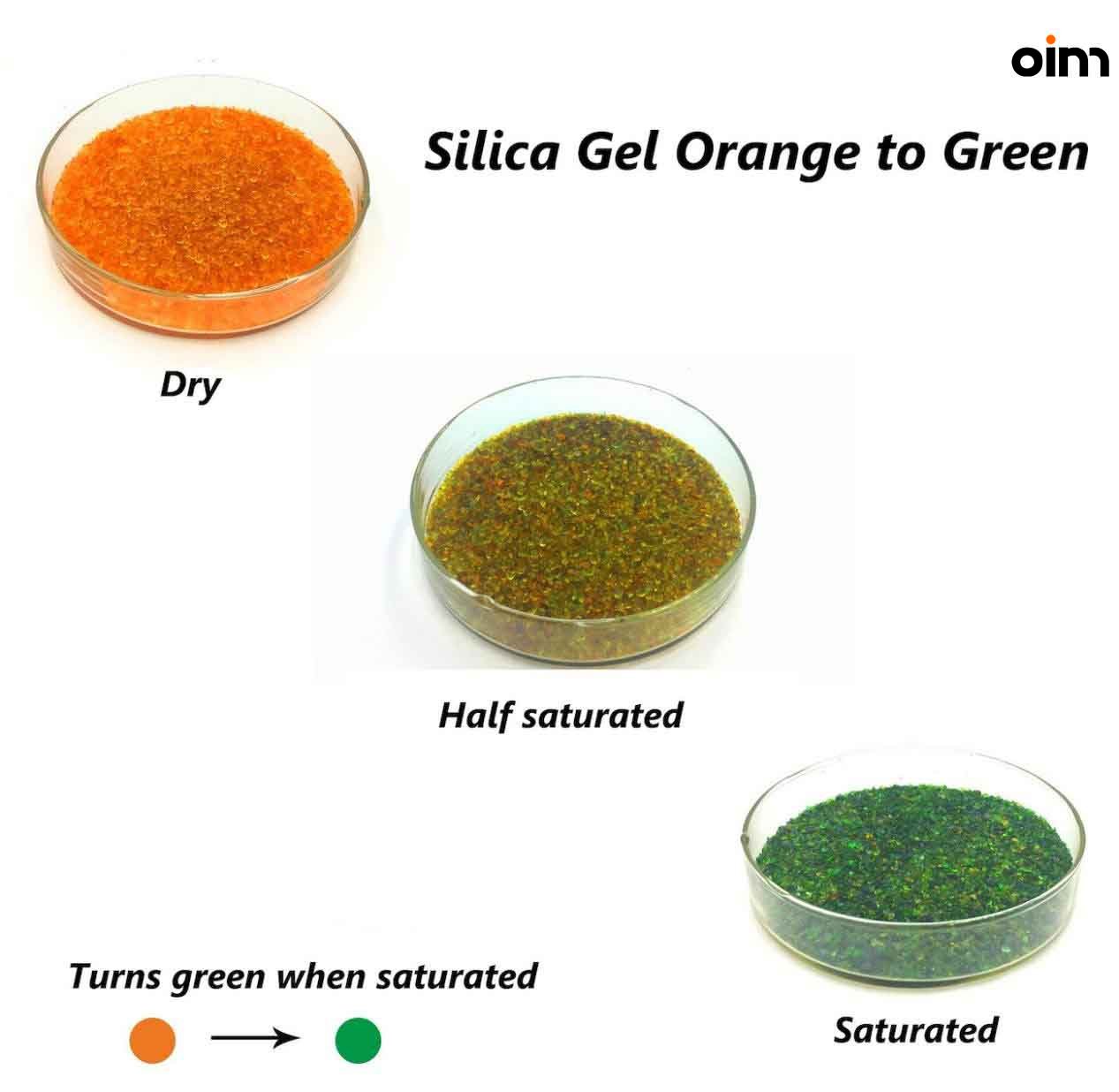Silica gel regeneration and classification
2022-09-15
In our life, we often see a small bag of silica gel desiccant in the boxes of our snacks, clothing, and shoes. So what are these silica gel? Today OIM Chemical will briefly introduce about the relevant knowledge of silica gel.
Generally speaking, silica gel can be divided into two categories: organic silica gel and inorganic silica gel according to its properties and components.
Inorganic silica gel is a highly active adsorption material, usually prepared by reacting sodium silicate and sulfuric acid, and undergoing a series of post-treatment processes such as aging and acid foaming. Silica gel is an amorphous substance, and its chemical formula is mSiO2. nH2O. It is insoluble in water and any solvent, non-toxic and tasteless, chemically stable, and does not react with any substances except strong alkali and hydrofluoric acid. Various types of silica gel form different microporous structures due to different manufacturing methods. The chemical composition and physical structure of silica gel determine that it has many characteristics that are difficult to replace by other similar materials: high adsorption performance, good thermal stability, stable chemical properties, and high mechanical strength.
Silica gel is divided into: macroporous silica gel, coarse pored silica gel, B type silica gel, and fine pored silica gel according to the size of its pore size. Due to the different pore structures, their adsorption properties have their own characteristics. Coarse pored silica gel has a higher adsorption capacity when the relative humidity is high, while fine pored silica gel has a higher adsorption capacity than coarse pored silica gel when the relative humidity is low. Between the pores, the adsorption capacity is also between the coarse and fine pores. Macroporous silica gel is generally used as catalyst carrier, matting agent, toothpaste abrasive, etc. Therefore, different varieties should be selected according to different uses.
Silica gel is divided into: white silica gel, orange silica gel (cobalt-free or color-changing silica gel), blue silica gel (cobalt silica gel), silica aluminum gel (WS type water resistant silica gel and H type non water-resistant silica gel) according to different functions and common models in the market.

Adsorbents commonly used in life are: molecular sieve, activated alumina, activated carbon, carbon molecular sieve, silica gel. So how about the water absorption of silica gel desiccant?
Silica gel desiccant is a physical adsorption desiccant whose main component is silicon dioxide (SiO2). The suitable hygroscopic environment for silica gel desiccant is room temperature (20~32℃) and high temperature (60~90℃), which can reduce the relative humidity of the environment to about 40%. Silica gel desiccant is insoluble in water and any solvent, non-toxic, tasteless, chemically stable, and does not react with any substances except strong alkali and hydrofluoric acid. Usually, when the temperature is 30°C and the relative humidity is 90%, the moisture absorption rate of the silica gel desiccant is between 25% and 30%. Then we are required to store reasonably and efficiently:
1. The product is stored in a sealed system to avoid being exposed to the air for a long time;
2. Store in a dry and cool place, away from water and places with high humidity;
3. We cannot open the package for a long time during use, and seal it immediately after each use;
4. Please keep it in an airtight container in a cool, dry, well-ventilated place, away from incompatible substances.
Silica gel desiccant should be stored as dry as possible. The silica gel desiccant is reusable, as long as we simply dry it to blue (color-changing silica gel). Avoid direct contact with the air as much as possible for storage, and the storage space should be sealed.
So when we usually use silica gel desiccant, sometimes after a long period of time, its hygroscopicity is reduced. What methods do we need to take to restore it?
* Silica gel desiccant can be reused after baking at high temperature. It can be baked at 80-120 degrees Celsius to bake out the adsorbed water to achieve the purpose of repeated use. However, it should be noted that the inner layer of the desiccant packaging bag is heat-sealed, which can withstand a temperature of 80-120 degrees, so the packaging bag needs to be torn off and then baked.
* It is advisable to control the heating temperature at 120-180 ℃, for blue glue indicator, color changing silica gel, and DL type blue silica gel, it is appropriate to control it at 100--120 ℃. The higher temperature of various industrial silica gel regeneration should not exceed the following limits.
* Coarse pore silica gel should not be higher than 600℃; fine pore silica gel should not be higher than 200℃; blue glue indicator (or discolored silica gel) should not be higher than 120℃; silica-alumina glue should not be higher than 350℃. In addition, when we take the recovery method to regenerate the silica gel, its moisture content is generally controlled below 2% and can be put into use again.
For more knowledge of silica gel and adsorbents, please feel free to contact us for consultation.
